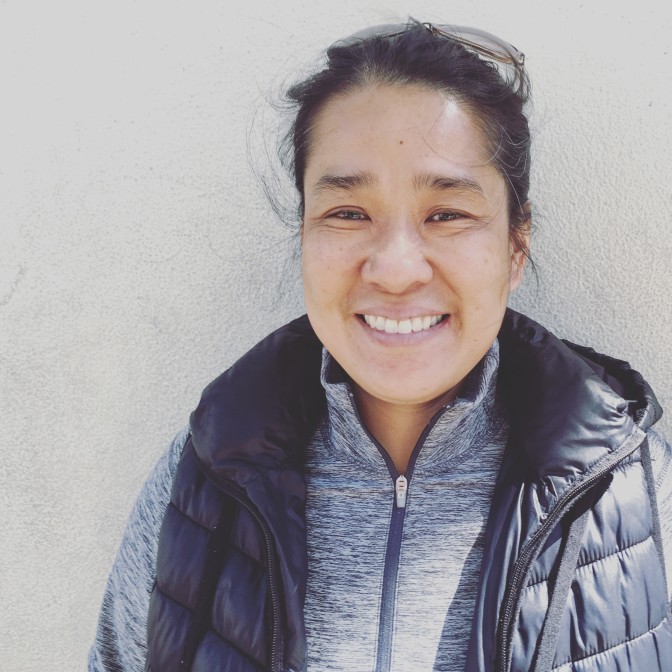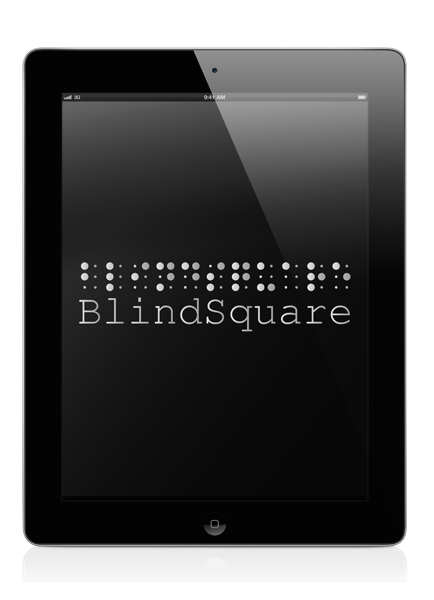 The following is one in a monthly series featuring the extraordinary people who make up the LightHouse staff.
The following is one in a monthly series featuring the extraordinary people who make up the LightHouse staff.
“My first goal is to make my students feel comfortable by demystifying Orientation and Mobility. People ask, ‘What’s that?’ I tell them that Orientation and Mobility is a fancy phrase to describe the set of skills people who are blind or have low vision use to safely navigate the world around them,” Jennifer Huey, one of LightHouse’s Certified Orientation and Mobility Instructors, tells us. She continues, “For example, I teach students how to properly use a white cane. In addition to cane travel, I teach people how to use all their senses to move about independently. People wonder how a blind person can cross a busy intersection, walk with a white cane and an umbrella or find an exit. I teach students those critical skills, which we call Orientation and Mobility or O&M.”
Jennifer comes to the LightHouse after being in the court reporting industry for over 20 years. “It was time for a career change. I wanted to make a tangible difference in the lives of others. My job in the court reporting field was just that – a job. Jennifer reflected on her history when considering a second career. “My mom developed eye cancer several years ago, which was a wakeup call to my family. Life is short; do what you love. On a more literal level, my mother’s diagnosis, coupled with my twin sister’s congenital monocular (‘single eye’) vision, led me to the field of blind services. I went back to San Francisco State (she got her Bachelor’s degree in Communicative Disorders, with a minor in Special Education there as well) to earn my Master’s in Special Education, with a special emphasis in O&M.”
Kathy Abrahamson, LightHouse’s Director of Rehabilitation, was one of Jennifer’s instructors at SF State. “Kathy was infectious, with her bubbly personality and passion for helping people. She talked so highly of the LightHouse, and the satisfaction she felt in her career. Like my classmate Robert Alminana (who is also an O&M instructor at the LightHouse), I knew I wanted to work here.”
Students who meet Jennifer are quickly put at ease by her warmth and great cheer. “We laugh a lot. I’m empowering people to live their lives, why not start living during our training? I learn about students’ concerns, many of which are similar to all students, but I also dig deeper to learn more about the individual I’m working alongside. That’s a key point: I’m working with—beside—my students, not teaching at them. One of my major goals for every student is that they understand that their white cane (if they need a cane) is a tool and not something stigmatizing. We reach that point together by setting personal goals that have an immediate impact, like learning how to deftly use a white cane and navigate a busy sidewalk.”
Born and raised in San Francisco, Jennifer certainly hasn’t let city lines keep her boxed in. “I love traveling. My last big trip was last August, when I went on a mission to bring assistive equipment like wheelchairs, crutches, canes and training to the Ugandan disability community. I set up a website to fundraise for adult and child-sized canes, various cane tips and cane accessories, to be distributed free of charge to Ugandans in need. It was an incredible journey – I can’t wait for my next trip.” Jennifer is also a thrill seeker, having skydived twice, and she loves drama, from movies to musicals. She emphatically states: “Go to Shakespeare in the Park. Do it! You’ll love it!”
If you’re wondering if you should sign up for Orientation and Mobility training at the LightHouse, Jennifer has this to say: “Pick up the phone, shoot us an email, stop by…you have to be the one to make the first step. I assure you, you’re in control of your training, but we’re here to help you figure out what you need to thrive.”
To get started, call us at 415.431.1481 or write us at info@lighthouse-sf.org.

 The following is one in a monthly series featuring the extraordinary people who make up the LightHouse staff.
The following is one in a monthly series featuring the extraordinary people who make up the LightHouse staff.
